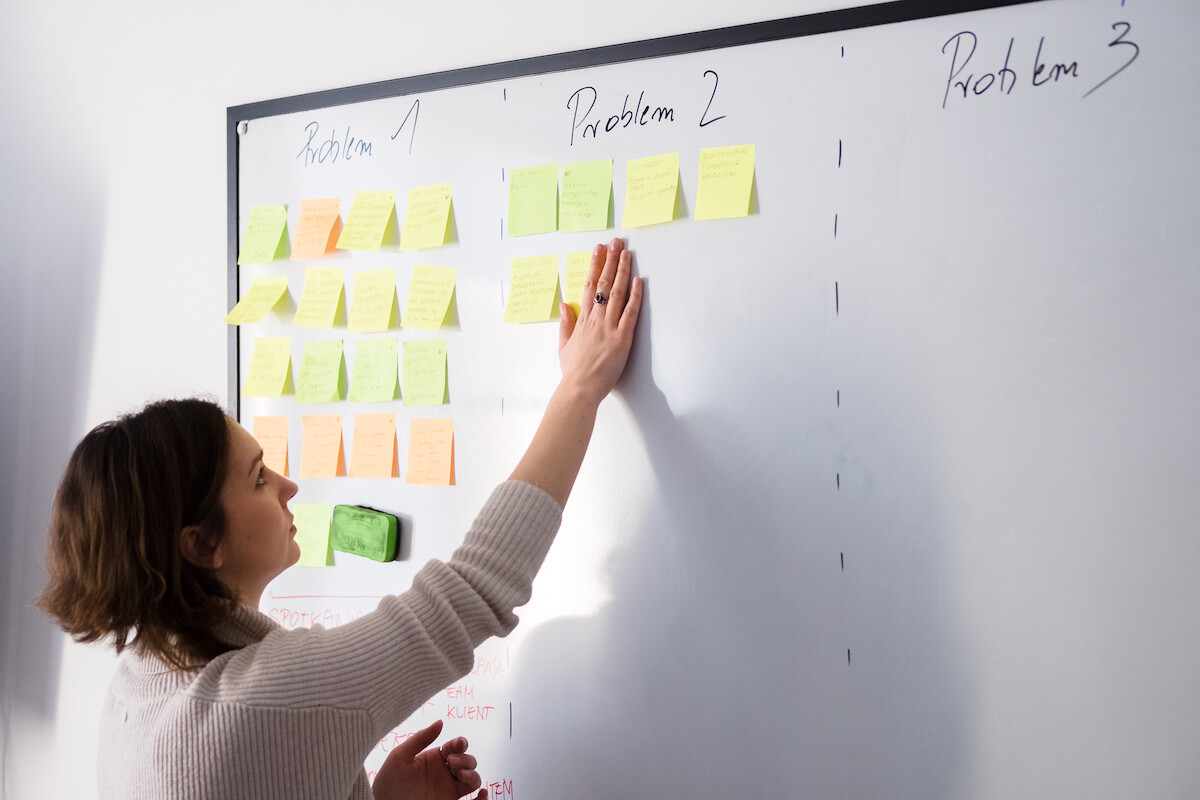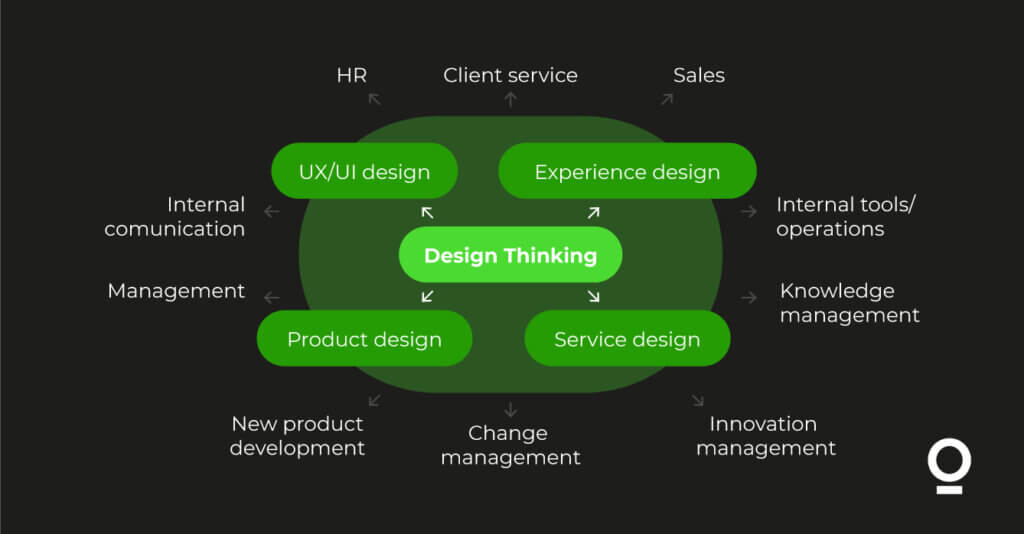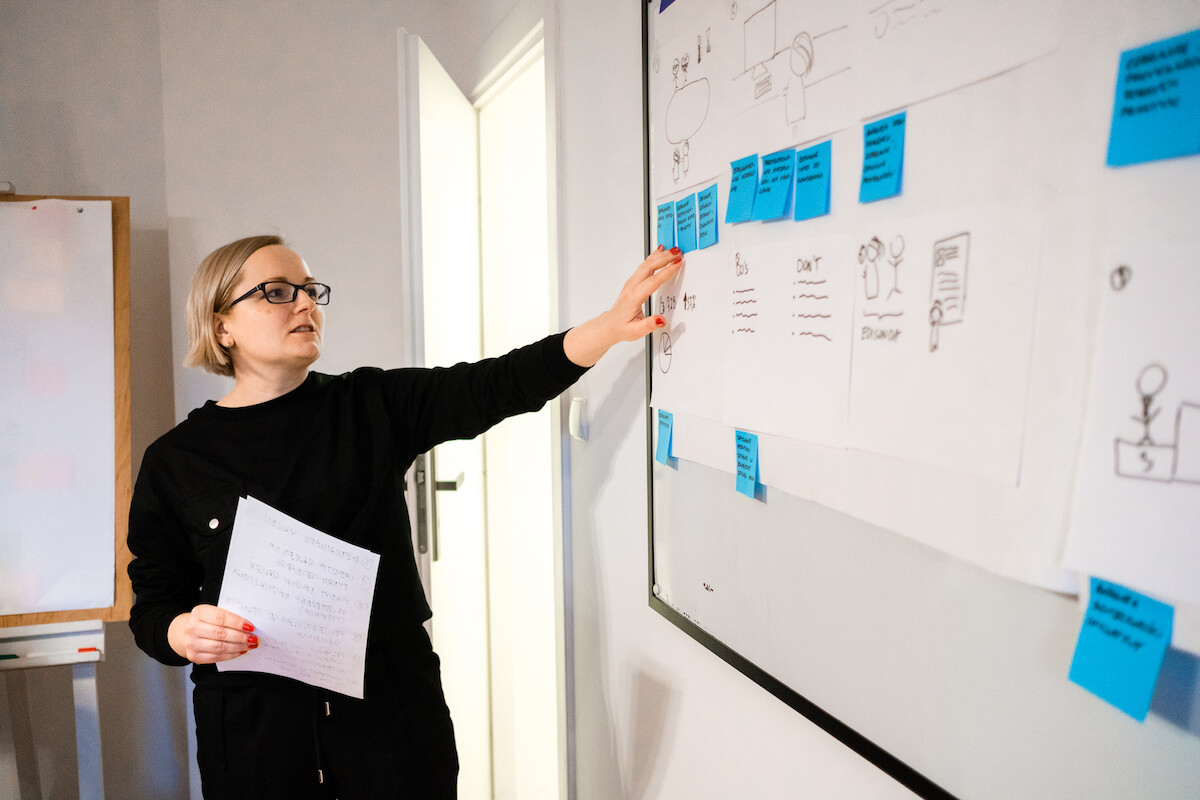The foundations of UX and design thinking
UX design is a field strongly connected with design methods called design thinking and user-centered design. These two English terms are a set of principles and best practices used in design to ensure that the solutions created respond to real user needs and solve the right problems. These principles, while often equated with product design, are applicable in many other areas.
Regardless of whether you already have a UX team in your organization or you use the help of external designers – if you want to learn how to use the full potential of design thinking in your organization, this article is for you.

ROI – or does UX pay off?
A study by the consulting company Watermark shows that companies that invest in the broader customer experience achieve three times better stock market results than companies that stay in the tail of taking care of the customer experience.
Typically, these calculations are in areas directly related to the customer-facing product. Decision makers are satisfied because key indicators are rising: conversion, order value, customer engagement, satisfaction and loyalty, and customer service costs are falling.
There is no doubt that the right actions in these areas quickly bring the expected return on investment. However, a good designer, who consciously follows the design process from the discovery and naming of the problem to the delivery of the initially verified solution, is able to use the same principles and tools in less obvious areas, which bring less visible, but equally valuable effects.
It turns out that such impact can be measured as well. IBM monitored their internal “experiment” of hiring about 1000 UX designers and applying design thinking principles to different areas of the organization for 3 years.
The research showed that the new approach cut project time in half (cost savings), deliverables contained half as many errors, and ROI for user-centered design projects averaged 301%. Moreover, the teams involved were more motivated and satisfied with the results of their work. So let’s take a look at some less obvious areas where UX can be useful in a large organization.

Internal tools
Large organizations are very complex organisms, governed by their own laws and using internal tools, often tailor-made. Unfortunately, these tools can be very neglected in terms of usability. This results in frustration of users who expect to use systems as efficient and user-friendly as the ones they encounter on a daily basis. Streamlining and making these systems more consistent is often the first task – aside from taking care of externally facing systems – that UX designers in large organizations face. Taking care of this area is a worthwhile investment: it allows you to perform tasks more efficiently and improves job satisfaction.
UX for HR
An example of an area where UX can bring real value are internal HR tools and internal communication tools and systems. On the basis of an audit of the current communication paths and tools, as well as the ways in which they are used, the designer can streamline the existing tools, design new ones or tidy up the entire ecosystem of tools: clarify their functions and the ways in which they can be used in an organisation.
An analogous process is often used when introducing or modifying an existing intranet. An approach focused on users’ needs is a way to avoid the trap of boxed solutions, but also of oversized custom solutions. The result of designers’ work in these areas is more effective internal communication and efficient HR tools.
These, in turn, translate into higher employee satisfaction and lower team turnover (the so-called Digital Employee Experience), and these are very measurable benefits for the organization. An interesting example of applying the human-centered design approach is designing the experience of a person applying to a company and starting work. Perfectly designed and cooperating with each other tools used for recruitment and onboarding of an employee build a positive first impression and help the employee to become a productive part of the organization faster.
Useful methods and tools: internal communication audit, persona, empathy map, IDI, user journey
UX for new service development
In our work we encounter various challenges, many of which go far beyond interface design. We encourage the client to look at the problem more broadly than through the interface, i.e. by looking at the whole process, the context in which it is implemented, and the elements with which it is connected. In this way, we work to change entire processes, not just interfaces.
A good example of going beyond the interface is service design. Here, the goal is to design the entire process of delivering a service, both on the side visible to the user and on the side of the company delivering it. The digital interface will be just one piece of the puzzle.
From our experience:
In one of our projects, we started with the client’s idea for a customer service application, but during the collaboration it became clear that it would also be necessary to support the structuring of the processes that are to implement this new service. These two sides have to be synchronized with each other, and their actions carefully planned.
We design for better
We used standard design thinking and service design tools such as observation, research, persona and service blueprint to analyze the current state and design a new service model. At the same time, we recommended that the client think about the new service in terms of MVP: introduce the service to the market gradually, test it and modify it accordingly to reduce the risk of investing in features that bring little value to the customer.
Useful methods and tools: persona, ethnography, service blueprint, MVP, How Might We
UX in implementing organizational change
Introducing new tools and policies in a large company is in some ways similar to launching a new product. While users don’t face the choice of whether to use the product or not, they also have to learn about it, accept it, and learn to use it. User-centered design tools can come to the rescue here. Research will help determine what are the current needs, problems and ways of action of different types of users.
Based on the personas created, the process of implementing the change can be designed so that it is perceived by users as beneficial. It is also important to provide adequate support during and after the change, consistent with the users’ natural learning style and tailored to their real needs. This makes the transition period less disruptive, which in practice translates into higher productivity and greater employee satisfaction in the long run.
Useful methods and tools: persona, IDI, ethnography, user journey
UX in knowledge and information management
Every organization accumulates a huge amount of internal knowledge. However, users often find it difficult to use this knowledge due to a multitude of sources, not very user-friendly ways of accessing knowledge bases, unclear information architecture and siloed organizational structure. This situation leads to wasted resources: teams waste time searching for information and solving problems already solved or duplicate the tasks of other teams.

We have repeatedly helped our clients to organize the information architecture in various knowledge storage systems so that it is more intuitive for users. In addition, we have designed ways to present information to employees so that it is more accessible and therefore more likely to be used. Better access to knowledge in the organization means real savings: less time spent on accessing knowledge, less duplication of work, more effective problem solving.
Useful methods and tools: observation, tree testing, card sorting
UX in innovation creation
Knowledge of tools that support idea generation and verification makes designers become natural partners for organizations whose goal is to create innovative solutions. Therefore, very often design companies support large organizations in building internal teams responsible for creating or facilitating innovations, the so-called innovation teams or innovation labs.
The task of the external company will then be to support in defining the strategy, creating the team, planning the workspace and collecting a set of basic tools that the team will be able to use. The role of such a team is also to promote the use of design methods in other teams and areas of the company.
Is that all?
No! The list of design thinking applications never ends, because it is not a set of ready-made solutions, or even tools, but a way of thinking and acting that is based on several key assumptions
- focus on user needs: identifying real user problems and solving them,
- iterative approach to creating and optimizing solutions: prototyping, testing, improving and retesting,
- consideration of diverse viewpoints: creating interdisciplinary teams that solve problems faster and more effectively, and early inclusion of key decision makers.
It’s an approach that doesn’t just apply to UX design in the narrow sense, but to designing any new solution. Is it worth trying? Looking at the numbers, perhaps we need to ask ourselves: can we afford not to do it?



